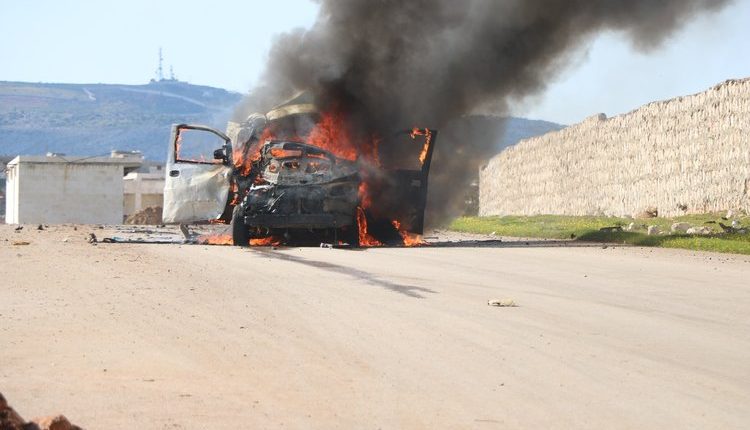
By Saeed al-Hayes
QAMISHLI, Syria (North Press) – Since the beginning of February 2024 and until this March, the Syrian government forces launched more than 55 attacks, using one-way drones under Russian supervision on posts of the Turkish-backed armed opposition factions, aka the Syrian National Army (SNA), and posts of the Hayat Tahrir al-Sham (HTS – formerly al-Nusra Front) in the countryside of Latakia, Hama and Aleppo, west, central, and northwest Syria.
These attacks have resulted in the killing of more than 40 individuals, including leaders of those factions.
In February 2024, North Press published a report about a school in the village of Ain al-Beida in the western countryside of Latakia, which was converted by the HTS into a factory for one-way drones. The aircraft engineers are fighters of the Uyghurs, aka the Turkestan Islamic Party, who came from their homeland in China along with their families in 2013 and settled in the coastal mountains and the western countryside of Idlib.
Two main types
A military source working at a center for coordinating relations between Russian and government forces stated that the Russian government-launched aircraft entered service for the first time in Syria in October 2023. These aircraft consist of two main types.
The first type is the Gastello drones, which have six circularly distributed propellers and are powered by two main engines installed on their bodies. They are equipped with high-resolution cameras and updated with a night vision system that allows them to fly at night. This system enables the operator to clearly view the image, in addition to thermal sensors that provide the ability to monitor and scan the observed area in a circular manner, allowing for easy identification of the type of target, whether stationary or moving, the source told North Press.
As for the second type, it is the FPV drones, which consist of four propellers equipped with a single camera. They are characterized by their ability to track their target quickly, and their error rate is very low due to the presence of six engines mounted on their bodies, enhanced by a modern and advanced virtual reality system, in addition to a GPS device.
This type includes a reverse electronic control system unlike the Gastello type, where this system automatically adjusts to the target’s speed, while the first type increases its speed exclusively in a manual manner.
Launch sites
The source added that the launch sites for these drones are the Brigade 46 in western Aleppo countryside; Abu al-Duhur military airport in Idlib; military points in Masaran, Duwayr, and Tel Mardikh in Maarat al-Numan countryside in Idlib; and Jorin camp in Hama countryside.
The Russian forces, accompanied by the government’s Division 25, supervise the launch of these drones, and both forces are specifically present in Sarqib, Kafr Nabl, and Abu al-Duhur airport.
“Drones have proven their effectiveness in recent operations because they are easily accessible and achieve the desired damage,” according to the source.
